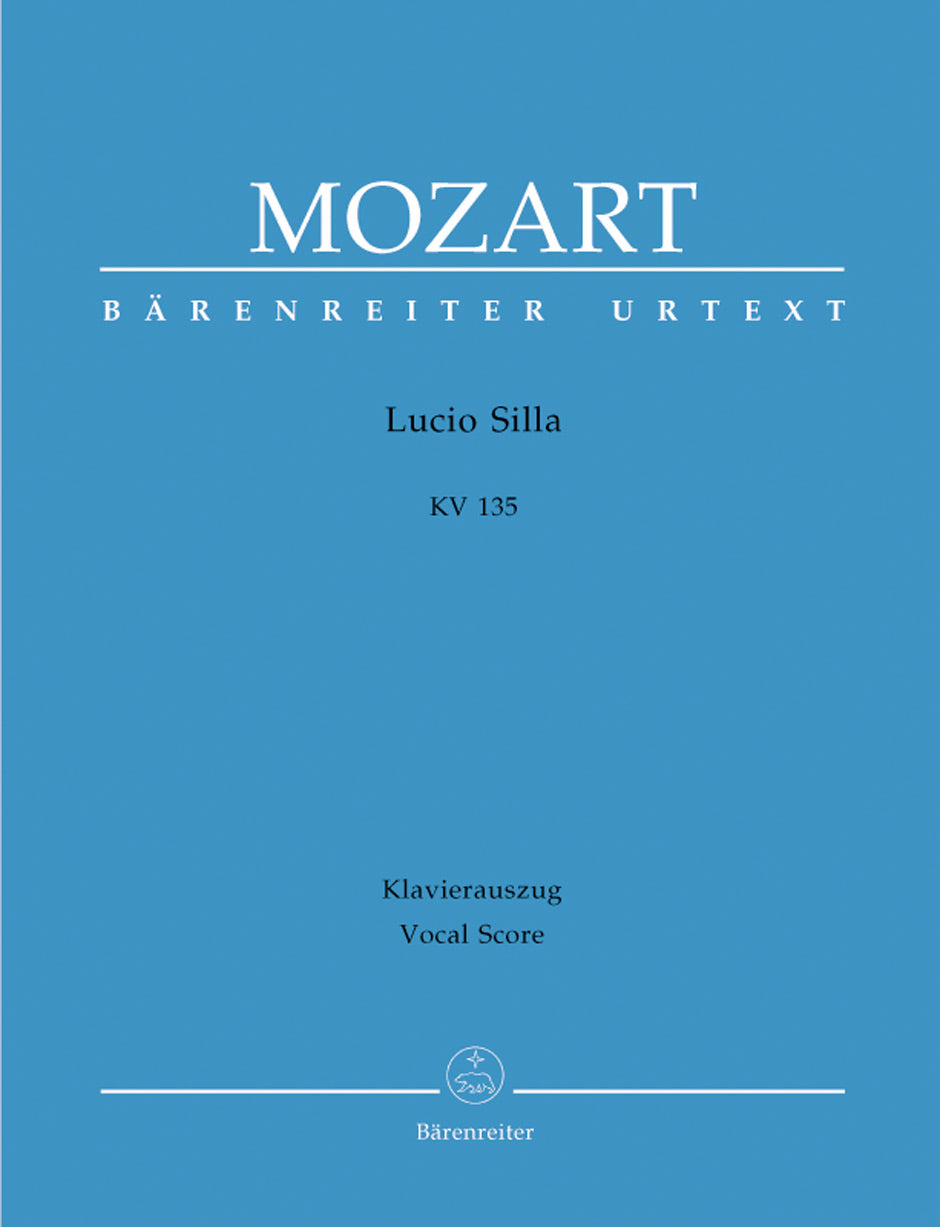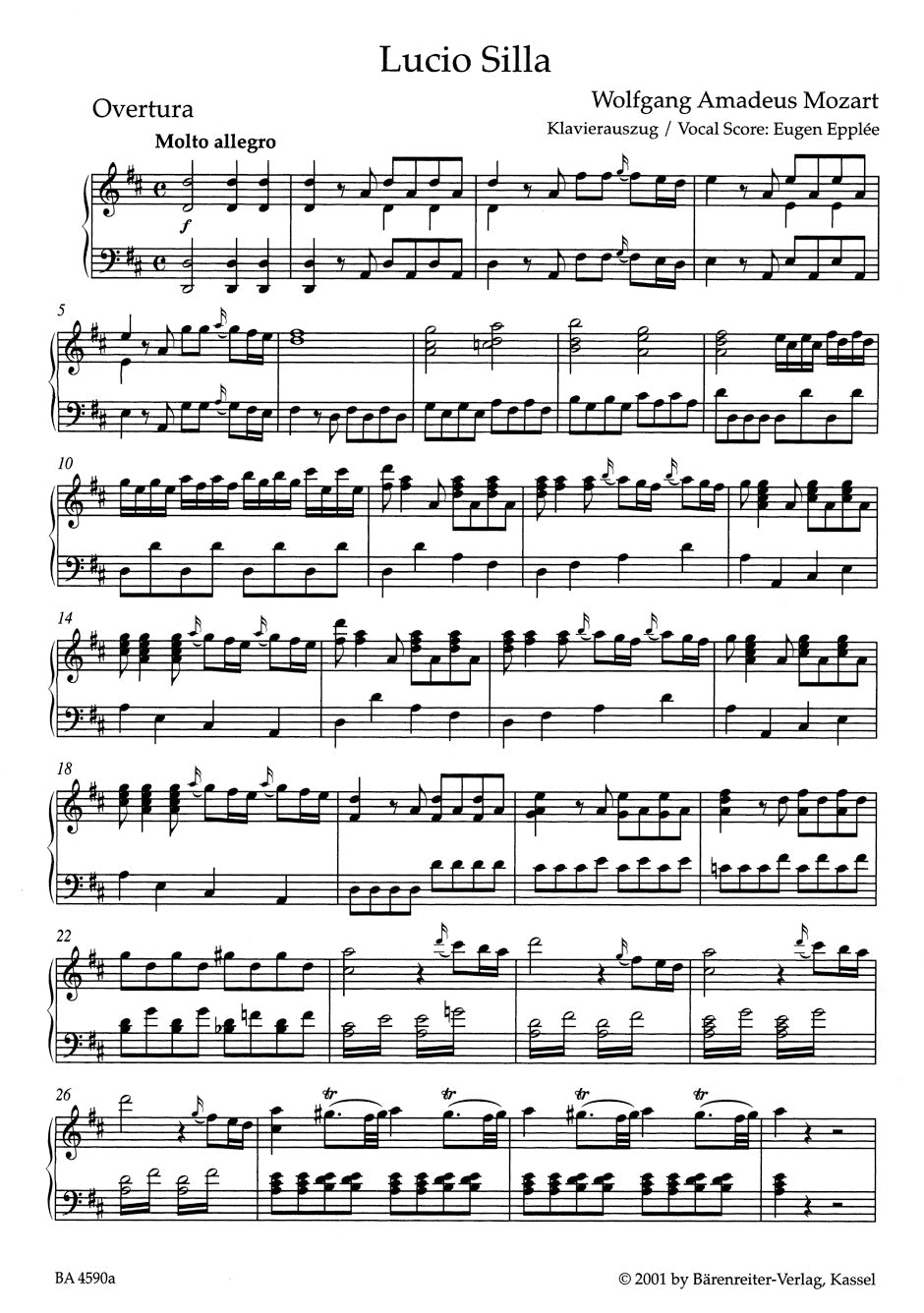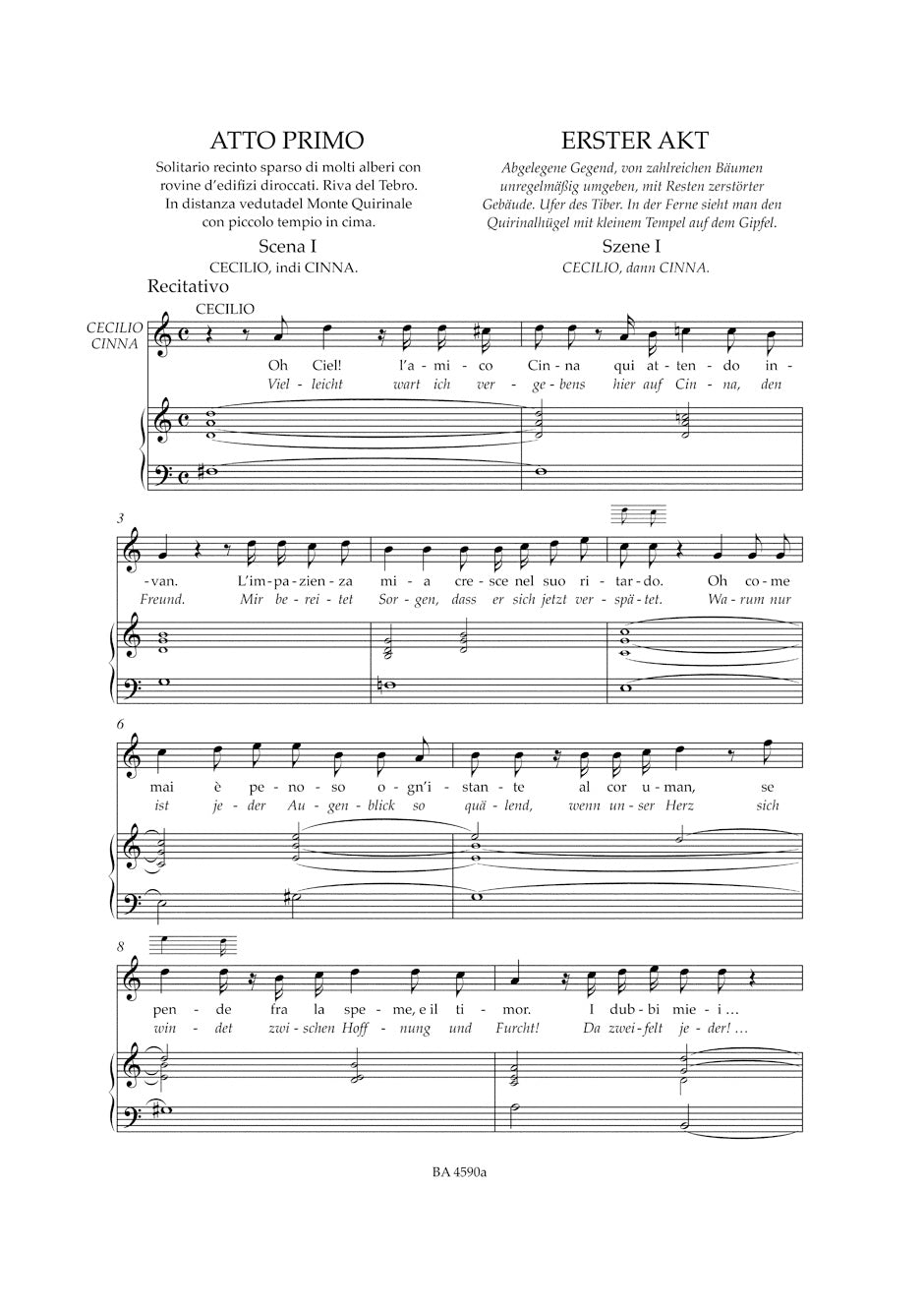Mozart: Lucio Silla, K. 135
In stock and typically ships within 1 business day.
- Composer: Wolfgang Amadeus Mozart (1756-1791)
- Editor: Kathleen Kuzmick Hansell
- Translator: Eberhardt Schmidt
- Piano reduction: Eugen Epplée
- Format: Vocal Score
- Instrumentation (this edition): Piano Reduction, Soprano, Tenor, Mixed Choir
- Originally for: Soprano, Orchestra, Tenor, Mixed Choir
- Work: Lucio Silla, K. 135
- Work Languages: German, Italian
- ISMN:
- Size: 7.5 x 10.6 inches
- Pages: 463
- Urtext / Critical Edition
Description
On 13 December 1769 Leopold Mozart and his son Wolfgang set out on their first tour of Italy. It was not until 28 March 1771 that they finally returned to Salzburg. The trip brought the young composer two commissions for opere serie. in March 1770 he was commissioned to write Mitridate, K.87 (74a), for the 1770–71 Carneval season at the Regio Ducal Teatro in Milan. Mozart started work on the opera in Bologna on 29 September 1770, and the première duly took place on the Feast of St. Stephen (26 December) in 1770. The second, Lucio Silla (K. 135), again commissioned for the 1771–72 Carneval season in Milan, doubtless resulted from the success of Mitridate. News of the commission reached the Mozarts in March 1771 in Verona, where they had stopped on their return to Salzburg. (At roughly the same time Wolfgang received an invitation from Vienna to supply a serenata teatrale for the wedding of Archduke Ferdinand, the third son of Maria Theresia, scheduled to take place in Milan in October 1771. This invitation ultimately resulted in Ascanio in Alba, K. 111.)
Publishers use a lot of words to describe what they sell, and we know it can be confusing. We've tried to be as clear as possible to make sure you get exactly what you are looking for. Below are descriptions of the terms that we use to describe the various formats that music often comes in.
Choral Score
A score for vocalists that only contains the vocal lines. The instrumental parts are not there for reference. Generally, cheaper than a vocal score and requires multiple copies for purchase.
Facsimile
Reproductions of the original hand-written scores from the composer.
Full Score
For ensemble music, this indicates that the edition contains all parts on a single system (there are not separate parts for each player). In larger ensembles, this is for the conductor.
Hardcover
Hardbound. Generally either linen-covered or half-leather.
Orchestral Parts
Similar to a wind set, this is a collection of parts. In the case of strings, the numbers listed are the number of copies included, though generally these are available individually (often with minimum quantities required).
Paperback
When publishers offer multiple bindings (e.g. hardcover) or study scores, this is the "standard" version. If you're planning to play the music, this is probably what you want.
Performance / Playing Score
A score of the music containing all parts on one system, intended for players to share. There are not separate parts for each player.
Set of Parts
For ensemble music, this indicates that there are separate individual parts for each player.
Solo Part with Piano Reduction
For solo pieces with orchestra, this is a version that contains a piano reduction of the orchestra parts. For piano pieces, two copies are typically needed for performance.
Study Score
A small (think choral size) copy of the complete score meant for studying, and not playing. They make great add-ons when learning concertos and small chamber works.
Vocal Score
A score prepared for vocalists that includes the piano/organ part or a reduction of the instrumental parts.
Wind Set
For orchestral music, this is a collection of wind and percussion parts. The specific quantities of each instrument are notated.
With Audio
In addition to the printed music, the edition contains recordings of the pieces. This may be an included CD, or access to files on the internet.
With / Without Fingering (Markings)
Some publishers prepare two copies - a pure Urtext edition that includes no fingering (or bowing) suggestions and a lightly edited version that includes a minimal number of editorial markings.





